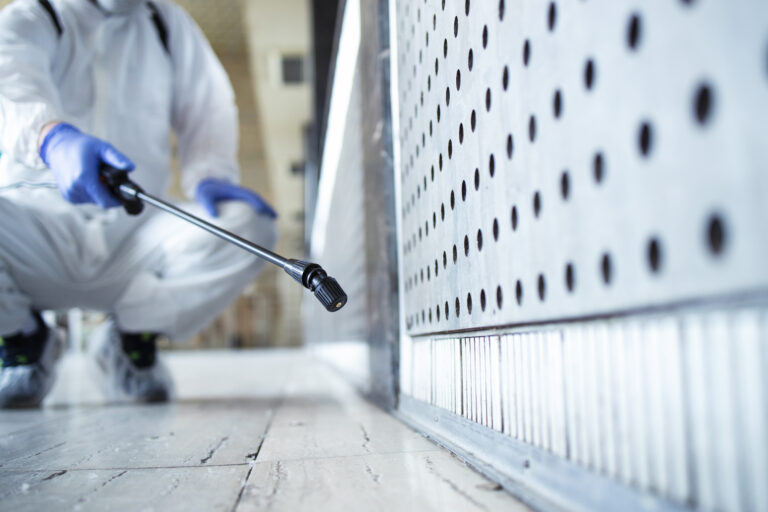
Ever Wonder Where Legionella Can Hide, and Why It Matters to You?
Maybe you’ve seen headlines about Legionnaires’ disease in Harlem and thought: “Where could it be lurking?” You’re not the only one asking that. Everyday places, from your gym to a city cooling tower, can harbor Legionella, and New York’s recent outbreak shows how quickly it can escalate. Keep reading to learn exactly where the bacteria thrive, how they spread, and most importantly, what you can do to protect yourself.
Why Legionella Awareness Is More Critical Than You Think
Although Legionella bacteria don’t spread from person to person, they do thrive in man-made water systems such as cooling towers, hot tubs, fountains, and even mist machines. With NYC’s Central Harlem cluster tied to 11 cooling towers that tested positive, it’s clear that even modern systems can become breeding grounds. Understanding where the bacteria hide isn’t just informational, it’s life-saving.
Common Misunderstandings, and Where They Go Wrong
Some people believe Legionnaires’ disease only comes from neglected or visibly dirty systems. However, the truth is that Legionella can proliferate in clean, well-maintained systems, especially if water stays warm or stagnant. Anyone exposed to contaminated mist, even briefly, can risk infection.
1. Cooling Towers on Air-Conditioning Systems
In Central Harlem, 58 cases and two deaths were linked to cooling towers atop buildings in ZIP codes 10027 through 10039. [1] These systems disperse fine mist that can travel several city blocks. Though routinely cleaned, 11 towers tested positive and were remediated within 24 hours. [2] The CDC confirms that both open- and closed-circuit cooling towers can disperse aerosolized Legionella over distances unless drift eliminators and proper maintenance are rigorously applied. [3]
2. Hot Water Systems, Showers & Fountains
Legionella thrives in warm water environments (20–50 °C), including hot tubs, plumbing lines, fountains, and showers. Even commercial systems in high rises, hospitals, or hotels pose risks. NYC officials indicated that residential systems were not implicated in the outbreak, but shared systems in public or commercial buildings remain high-risk. [1] Warm showers aerosolize bacteria into droplets that can reach deep into the lungs, increasing infection risk.
3. Whirlpool Spas & Gym Facilities
Warm and aerated water in spas and whirlpools supports Legionella growth. Several outbreaks globally trace back to public spas with warm water and frequent guest turnover. Unless controls are meticulously enforced, including disinfectant residuals and cleaning, these facilities can pose serious health threats. [4]
4. Decorative Fountains & Mist Machines
Systems like produce misters, decorative fountains, or humidifiers may seem harmless. Yet, they’ve been linked to outbreaks where aerosolized Legionella spreads in public indoor spaces. A supermarket misting machine in Murcia, Spain, caused one such outbreak. Similarly, aerosolized potting soil has triggered Pontiac fever among gardeners. These examples highlight how seemingly innocent systems can hide dangerous bacteria. [5]
5. Complex Plumbing Systems & Stagnant Water
Large plumbing systems with dead legs, low-use outlets, or stagnation zones create ideal breeding spots for Legionella. These areas often go unnoticed in large buildings and pose a high risk when usage resumes, such as after construction or business closures. The CDC notes that potable water systems in poorly flushed buildings have caused community outbreaks. [6]
Why NYC Is Taking the Harlem Cluster Seriously
Since July 25, 2025, at least 58 people have fallen ill and two have died in Central Harlem due to Legionnaires’ disease. [7] After health officials traced the source to several contaminated cooling towers, they mandated cleanup within 24 hours. [8] Vulnerable groups, including adults over 50, smokers, and individuals with chronic lung conditions, were urged to seek medical care for symptoms like cough, fever, or muscle aches. [9]
Why These Locations Keep Causing Outbreaks
Because Legionella is robust and resilient:
- It thrives in warm, stagnant water commonly used in buildings to conserve energy.
- It hides in biofilms where disinfectants struggle to penetrate.
- When systems are restarted or flushed, bacteria can aerosolize rapidly.
- Symptoms take days to show, allowing unnoticed spread initially. [10]
Steps You Can Take to Reduce Risk
For Residents in Affected Zones:
- If you live or work in Harlem zip codes 10027–10039, monitor for symptoms and seek early medical care if needed. [7]
- Advocate for transparency: building owners are required to register and test cooling towers. [11]
For Building Operators & Managers:
- Use the CDC’s toolkit for controlling Legionella across cooling towers, hot tubs, fountains, etc. [12]
- Ensure anti-microbial treatment is automated, maintain proper water temperatures, and avoid stagnation zones. [13]
For Home & Workplace:
- Flush unused taps and hot water systems weekly.
- Ensure water heaters stay above 60 °C (140 °F) to reduce growth risk.
- Select proper fluids for devices: never fill windshield washer reservoirs with tap water; this has been linked to rare outbreaks. [14]
Dark Humor Moment (Brief but Present)
If your AC system is turning into a microbial greenhouse, maybe it’s time for a vacation outside.
Conclusion: Awareness Can Halt a Hidden Danger
Legionella can thrive in places you’d least expect, from cooling towers to decorative fountains. NYC’s recent Harlem cluster is a stark reminder: contamination can strike even modern infrastructure. While most people won’t get sick, being informed and proactive enables early detection and prevention. So next time you hear about Legionella or an outbreak, ask yourself: Where could it be hiding near me?
Sources:
- NYC Health Department on Outbreaks: An official page detailing Legionnaires’ disease and public health responses.
- NYC Health Department on Cooling Towers: Official guidance on cooling tower regulations and remediation.
- CDC Cooling Tower Guidance: Information from the CDC on Legionella and cooling towers.
- CDC Hot Tubs and Spas: A guide to preventing Legionella in spas and hot tubs.
- International Outbreak Examples: A study or report on various Legionella outbreak sources.
- CDC Plumbing Systems: Information on Legionella in large building water systems.
- General News Report on Outbreak: A typical news article about a Legionnaires’ disease outbreak.
- News Report on Health Advisory: An example of a news article with a public health advisory.
- Vulnerable Populations: General information on who is at risk for Legionnaires’ disease.
- Legionella Ecology: A scientific overview of Legionella’s survival and transmission.
- NYC Building Regulations: Information on NYC’s regulations for building owners and cooling towers.
- CDC Legionella Toolkit: A comprehensive guide for building managers on prevention.
- CDC Anti-Microbial Treatment: General guidance on using disinfectants for Legionella.
- Unusual Outbreak Sources: Information on rare sources of Legionella, such as windshield washer fluid.




